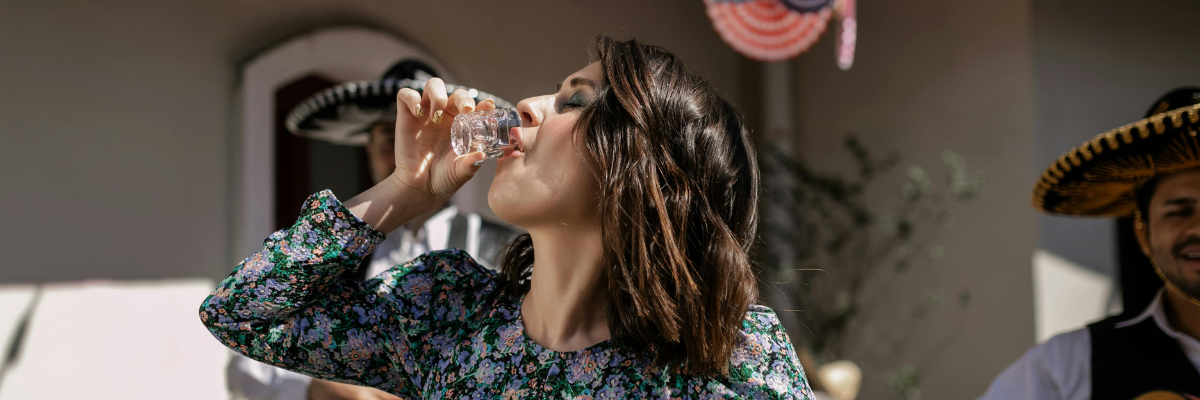
Tequila isn't just about having a good time (though we're all for that!). The popular spirit has quite a history that reflects rich the Mexican culture and traditions that have birthed it. The next time you enjoy a few drinks with your friends and tequila enters the picture through shots or cocktails, here are some fascinating facts you can share to wow everyone:
It’s all about the blue agave
 Photo by Dylan Freedom on Unsplash
Photo by Dylan Freedom on UnsplashTequila owes its life to a hardy plant native to Mexico's arid landscapes - the blue agave. To earn the 'tequila' label, the spirit must be at least 51% derived from this plant. But if you're really into tequila, you'll want to look out for '100% agave', which means it's made totally from blue agave. The heart of this plant, or 'piña', takes about 8 to 12 years to be ready for harvest and to start its journey into becoming tequila.
Tequila has a birth certificate
 Photo by Lewis Keegan on Unsplash
Photo by Lewis Keegan on UnsplashSo, first off, did you know that genuine tequila has a sort of ‘birth certificate’? Just as true Champagne can only come from the Champagne region of France, real-deal tequila has to hail from certain spots in Mexico. These include five states, namely Jalisco, Guanajuato, Michoacán, Nayarit, and Tamaulipas. And yes, there's actually a place called Tequila in Jalisco, and that's where our beloved spirit was born! It's all about the unique volcanic soil there, which gives tequila that distinctive kick.
We owe tequila to Jimadores and their “coa”
 Photo by Austin Curtis on Unsplash
Photo by Austin Curtis on UnsplashWho's responsible for the harvest? Meet the “Jimador,” a master agave farmer. He uses a special tool called a “coa” to harvest the blue agave. Timing is everything for the Jimador, as the ripeness of the agave determines the ultimate flavor of the tequila. Once harvested, the agave gets roasted, fermented, and distilled to become the spirit we all love.
There are many different varieties of tequila
 Photo by Andy bardon on Unsplash
Photo by Andy bardon on UnsplashSure, we've all done a tequila shot or two with the requisite salt and lime. But did you know tequila has as many varieties as fine wine? We've got Blanco, Joven, Reposado, Añejo, and Extra Añejo tequilas, each with its own distinct character. From crisp and flowery to rich, smokey, and caramel-like, there's a tequila out there for every palate.
True tequila doesn’t have any worms
 Photo by yayo davila on Unsplash
Photo by yayo davila on UnsplashContrary to popular belief, a real bottle of tequila doesn't contain a worm. This myth probably originates from mezcal, a different Mexican spirit, where you may find a "worm" or, more accurately, a larva. Let’s not get the two things mixed up!
Tequila is on the healthier side of the spirit spectrum
 Photo by Chad Stembridge on Unsplash
Photo by Chad Stembridge on UnsplashContrary to its party-drink image, tequila can actually be a healthier choice (when enjoyed responsibly, of course). It's low in calories compared to many other alcoholic beverages, and the sugars (called agavins) in the blue agave plant won't spike your blood sugar. They may even support a healthy gut! But remember, moderation is the key.
Tequila has its own regulatory body
 Photo by Alena Plotnikova on Unsplash
Photo by Alena Plotnikova on UnsplashDid you know that tequila is so important to Mexico that it has its own regulatory body? The Consejo Regulador del Tequila (CRT) or Tequila Regulatory Council was established to ensure the quality and authenticity of tequila, protecting its production and its Denomination of Origin.
It has a royal history
 Photo by Luis Aceves on Unsplash
Photo by Luis Aceves on UnsplashTequila has a lineage that dates back to the Aztec civilization. They were the first to ferment a beverage called pulque from the agave plant. When the Spanish conquistadors arrived in the 16th century, they introduced distillation techniques, refining pulque into what we now know as tequila. This spirit has been part of Mexican culture and heritage ever since.
It can be sipped, not just shot
 Photo by Pedro Vit on Unsplash
Photo by Pedro Vit on UnsplashWhile tequila shots with lime and salt are popular, true tequila aficionados know that the best way to enjoy premium tequila is to sip it. High-quality tequilas, especially Reposado, Añejo, and Extra Añejo varieties, offer a depth of flavor that can be savored like a fine cognac. Serve it in a tulip-shaped glass to appreciate its aroma and taste!
Whether you prefer it neat, on the rocks, or mixed into a margarita, tequila is a spirit that deserves to be celebrated and savored. So, salud to tequila – now you know a little more about why it’s truly a drink worth toasting to!


 Photo by
Photo by  Photo by
Photo by  Photo by
Photo by  Photo by
Photo by  Photo by
Photo by  a group of monarch butterflies on a treePhoto by
a group of monarch butterflies on a treePhoto by 

